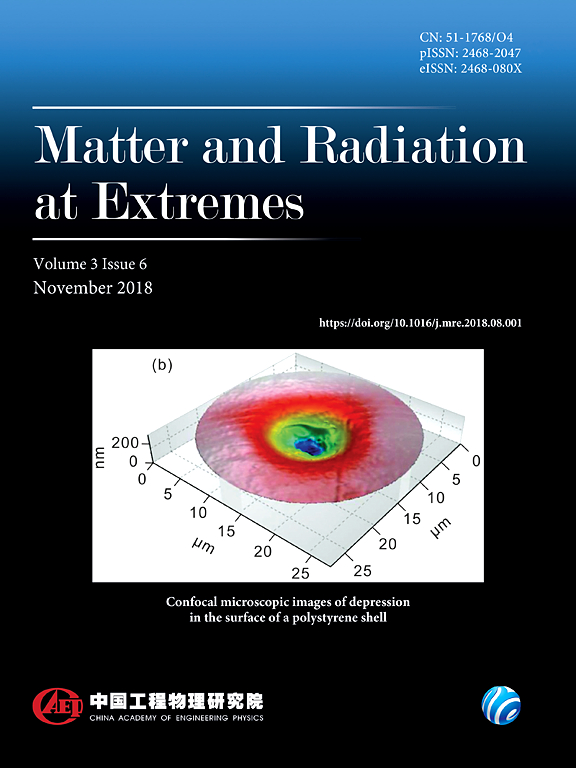Controlled transition to different proton acceleration regimes: Near-critical-density plasmas driven by circularly polarized few-cycle pulses
IF 4.7
1区 物理与天体物理
Q1 PHYSICS, MULTIDISCIPLINARY
引用次数: 1
Abstract
A controlled transition between two different ion acceleration mechanisms would pave the way to achieving different ion energies and spectral features within the same experimental set up, depending on the region of operation. Based on numerical simulations conducted over a wide range of experimentally achievable parameter space, reported here is a comprehensive investigation of the different facets of ion acceleration by relativistically intense circularly polarized laser pulses interacting with thin near-critical-density plasma targets. The results show that the plasma thickness, exponential density gradient, and laser frequency chirp can be controlled to switch the interaction from the transparent operating regime to the opaque one, thereby enabling the choice of a Maxwellian-like ion energy distribution with a cutoff energy in the relativistically transparent regime or a quasi-monoenergetic spectrum in the opaque regime. Next, it is established that a multispecies target configuration can be used effectively for optimal generation of quasi-monoenergetic ion bunches of a desired species. Finally, the feasibility is demonstrated for generating monoenergetic proton beams with energy peak at E≈20–40 MeV and a narrow energy spread of ΔE/E≈18%–28.6% confined within a divergence angle of ∼175 mrad at a reasonable laser peak intensity of I0 ≃ 5.4 × 1020 W/cm2.控制跃迁到不同的质子加速体制:由圆极化少周期脉冲驱动的近临界密度等离子体
在两种不同的离子加速机制之间的受控过渡将为在同一实验装置内根据操作区域实现不同的离子能量和光谱特征铺平道路。基于在实验可实现的大范围参数空间内进行的数值模拟,本文报道了相对强圆偏振激光脉冲与薄的近临界密度等离子体靶相互作用对离子加速的不同方面的全面研究。结果表明,通过控制等离子体厚度、指数密度梯度和激光频率啁啾,可以将相互作用从透明状态切换到不透明状态,从而在相对透明状态下选择具有截止能量的类麦克斯韦离子能量分布,或在不透明状态下选择准单能谱。其次,建立了多物种目标配置可以有效地用于产生理想物种的准单能离子束。最后,证明了在激光峰值强度为I0≈20-40 MeV、发散角为~ 175 mrad的情况下产生能量峰值为ΔE/E≈18%-28.6%的单能质子束的可行性,激光峰值强度为5.4 × 1020 W/cm2。
本文章由计算机程序翻译,如有差异,请以英文原文为准。
求助全文
约1分钟内获得全文
求助全文
来源期刊

Matter and Radiation at Extremes
Physics and Astronomy-Atomic and Molecular Physics, and Optics
CiteScore
8.60
自引率
9.80%
发文量
160
审稿时长
15 weeks
期刊介绍:
Matter and Radiation at Extremes (MRE), is committed to the publication of original and impactful research and review papers that address extreme states of matter and radiation, and the associated science and technology that are employed to produce and diagnose these conditions in the laboratory. Drivers, targets and diagnostics are included along with related numerical simulation and computational methods. It aims to provide a peer-reviewed platform for the international physics community and promote worldwide dissemination of the latest and impactful research in related fields.
 求助内容:
求助内容: 应助结果提醒方式:
应助结果提醒方式:


